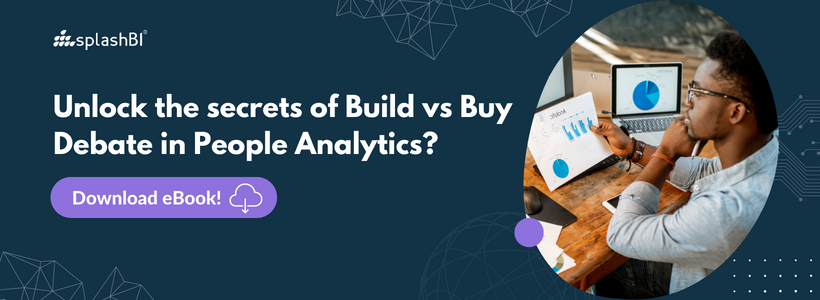The Great Resignation. Quiet quitting. Not so quiet quitting. Retrenchments. The past few years, well into 2023, have been a time of significant churn and flux for employers. Voluntary turnover rates are set to be as high as 35% this year. For any organization, be they large conglomerates or startups, these are worrying trends. The talent pool is any business’ biggest asset. Without them, there is no business. Holding on to good talent with timely and informed talent retention strategies has many benefits. Cost saving on acquiring and training new talent, improved productivity, lasting customer relationships, an engaged and motivated workforce, positive employee experiences and culture, business and knowledge continuity, and higher returns on future hiring due to a strong employer brand, to name just a few.
All organizations face the challenge of employee attrition in this post-pandemic world. The U.S. Bureau of Labor Statistics (BLS) reports that 4.25 million people quit their jobs in January 2022, up from 3.3 million in 2021. Earlier known parameters of predicting attrition no longer hold good. In 2022 alone, it was expected that 42% of the employee pool is still likely to quit, no matter the perks being offered. These surging numbers have pushed H.R. and management teams scrambling back to the drawing boards to understand how to staunch this bleed.
Reports have shown disturbing trends in understanding and controlling the reasons behind this massive employee attrition worldwide. The trends seem not to follow any pattern known to businesses so far, be it gender or age-based parameters. While 40% of employees plan on staying back in their present jobs for less than a year, the numbers wanting to leave sooner are higher among Gen-Z at 65%. Of those staying back, 41% are likely to seek a role change within the organization.
It is evident that employee retention strategies take centerstage in these volatile times. The questions that beg to be answered are why people leave and what can be done to prevent these exits. With all the data points available to businesses, from hiring and onboarding to performance reviews, employee surveys and exit interviews, the magic lies in qualifying these through people analytics dashboards to develop robust employee retention strategies that work in these times.
But before jumping headlong into crafting those talent retention strategies, let’s understand the basics.
What is talent retention?
Talent retention is the ability of an organization to sustain its workforce over the long term with:
- Adequate compensation
- Reward and recognition
- Conducive working conditions (mental, emotional and physical)
- Respect for the individual in a bias-free work environment (Diversity, Equity, Inclusion and Belonging)
- Consideration for work-life balance
- Learning and development opportunities using skill gap analysis
Employees quit organizations if they feel one or more of these factors are lacking.
Importance of Talent Retention: There’s no Profitability without it
Most organizations spend valuable resources to train, mold and mentor existing employees to take on specific responsibilities and business goals. Retaining this precious talent pool is far more viable than repeatedly acquiring and preparing new right-fit talent. Employee retention has seen training expenditures reduce from $93.6 billion in 2017 to $82.5 billion in 2020. But doing this requires sustainable and evolved talent retention strategies.
An example of this is one of the Big Four finance and accounting firms, Ernst & Young LLP, paying mid-cycle bonuses and will provide its next round of pay raises in August on top of perks like reimbursement for commuting and pet care costs. This was part of the company’s long-pending market correction after years of slow wage growth. It added U.S. $2 billion to base compensation increases and bonuses over the last two years.
But increasing salaries is not always the only route to reduce employee turnover. Sound talent retention strategies require data and insight on what employees really want – we will get to that in just a bit.
Talent Retention vs Fresh Hires
Retaining existing talent costs less. Hidden or unseen costs in replacement hiring include handover planning, recruiters & headhunter fee, training costs, administrative cost, and time.
The cost of hiring and training a fresh hire, especially for small companies, can make a significant dent in their bottom lines. Adam Grant, an organizational psychologist from Wharton, agrees, “It’s more expensive to recruit, hire, and train new people than to invest in your existing team.”
The U.S. Bureau of Labor Statistics “Job Openings and Labor Turnover Summary” stated in a February 1, 2023 release that “In December, the number of quits was little changed at 4.1 million. According to Gallup, this has cost $7.8 trillion globally in lost productivity (approximately 11% of global GDP). However, what is not demonstrably measurable is the impact on workforce morale and disruptions in teams.
Employee attrition figures are peculiar to geographies, policies, industry sectors and seasons. For example, Spotify found that its Work From Anywhere program helped the attrition rate drop by 15% in Q2 2022 compared to Q2 2019.
Delving deep into well-constructed people analytics dashboards will pave the way to develop custom talent retention strategies that align your business needs with those of your employees.
Talent Retention Strategies for 2023
Having understood employee attrition and the need for talent retention, organizations would do well to invest in talent management to reduce employee turnover. The topics we touch upon here are interlinked.
1. Effective supervision and management
Employees work to advance their careers, and real-time access to performance dashboards for business leaders and H.R. keeps the organization on track with its goals while recognizing and rewarding deserving talent. One cannot overemphasize using people analytics dashboards to identify hidden biases, measure performance and identify “flight risks”. With this information at hand, using people analytics solutions, H.R. teams and hiring managers are better equipped to do what it takes to retain their best talents.
2. Mitigate quiet quitting by quiet hiring
As employees “Quiet Quit” in the latter half of 2022, companies Quiet Hired as well. Vacancies created by such exits present opportunities for promotions and lateral moves via internal job postings to attract and retain talent while reskilling resources.
3. Build a culture to boost morale
The pandemic and the post-pandemic period have stirred a sense of self-worth, especially amongst Gen Z. Organizations must build a culture based on trust and transparency that encourages and celebrates diverse points of view. Having voices heard and appreciated enhances morale and lends a sense of belonging to help reduce employee turnover.
4. “Ideate Innovate Implement” – programs for recognition
Brainstorming and ideation with the intention to drive innovation, conducted in a competitive team environment, brings out the best in employees. Mentored and judged by captains lends dynamism, and such exercises give opportunities to identify talent using skill gap analysis to develop and implement robust L&D and talent retention strategies.
5. Mental and physical health
Studies have shown that employees have missed 14% of working days in Germany, a rise of 50% from 12 years ago, with burnout leaping from 12.1% in 2010 to 16.2% in 2016. The pace of work, deadlines, pressure and increasing demands on the quality of output have brought the spotlight on voluntary employee attrition.
What’s important is that employers use people insights to understand absenteeism and dips in performance and whether they are related to skill gaps or burnout impacting mental and physical health. And then they must build policies to mitigate these risks. For example, workers in France now have the Right to Disconnect from emails after work hours.
6. Diversity, equity, inclusion and belonging
A Glassdoor survey reveals that 76% of employees and job seekers weigh diversity heavily while accepting or rejecting employment. It is natural too. When employees feel valued, irrespective of their race, gender, sexual orientation etc., they stick around.
Reports find that organizations with above-average gender diversity outperform others by as high as 46-58%. What robust talent management strategies and people analytics can do is evaluate the impact of DEIB policies and whether or not they are working.
7. Flexibility vs productivity: does it have to be an either-or?
The pandemic has left a completely new workplace models and employee expectations in its wake.
Talent retention strategies backed by data can help evaluate performance and productivity as organizations explore models like remote, hybrid, flexible, or reduced hours in a post-pandemic world.
8. Objective 360-degree performance appraisal and feedback
A quarterly, half-yearly and annual performance appraisal scorecard can assess managers’ and team’s performance more holistically. A skill gap analysis (whether soft or business) can throw up employee retention strategies with actionable touch points.
9. Upskilling opportunities based on skill gap analysis
To take on meatier roles in a re-negotiated work environment comes with the rider of upskilling to fulfil the added responsibilities. Most often, these new positions require management training or technical skills training. To make the best of the skill gap analysis for employee retention, employers must deliver consistent retraining/ upskilling programs as part of the lure package.
How does People Analytics help?
High-performing companies are twice as likely to use people analytics compared to low-performing organizations.
People analytics presents dashboard visualizations to turn data into insight and enable timely and effective action. Studies have found that only 3% of them have said they have the information needed to make human resource decisions that matter. That’s precisely where people analytics software helps – turning data into valuable, actionable information.
Here’s how SplashHR helps organizations use people analytics dashboards to reduce employee turnover, reap the benefits of a diverse workforce, build talent retention strategies using skill gap analysis and attract and retain talent.
1. Quiet workplaces: navigating quitting, hiring and engagement
SplashHR provides people analytics dashboards on disengagement, performance and absenteeism metrics to assist employers in decoding patterns and flight risks. Employers can now hire by identifying talent internally, promoting based on performance and in alignment with business needs and employee aspirations.
2. Talent management in the times of layoff gloom and doom
People analytics provides data and insights that H.R. teams need to build an engaged, motivated workforce ready to go the extra mile. SplashHR helps evaluate performance and talent, building strategies to retain the right fit and helping others navigate into new roles while implementing empathetic change management policies to create engaged teams.
3. Hybrid workforce meets mainstream work culture
People analytics solutions like SplashHR help HR teams customize policies to balance workforce and business needs. It enables them to reinvent and reimagine approaches to align with employee expectations and business needs. SplashHR’s people analytics tech stack can seamlessly crunch employee data and help understand needs and expectations to develop remote, hybrid and office working policies and success metrics that mean business.
4. Fostering authentic and effective DEIB
Delivering DEIB needs data, insight, and implementation. SplashHR’s people analytics dashboards help H.R. teams consolidate and sift through data to evaluate the success of and evolve initiatives by identifying existing disparities or biases in the organization.
Long-term talent retention strategies need long-term DEIB initiatives based on employee expectations and industry best practices. They also need to measure the organization’s DEIB scorecard against metrics of policy vs implementation. People analytics holds these answers.
5. Creating a skill-driven work culture
A college education or even years of experience does not necessarily translate into job readiness, which demands skill enhancement, continuous learning, and upskilling.
SplashHR’s people analytics provides insights into employee performance and dashboards on individual and team performance to understand skill gaps and plan for hiring and L&D plans.
SplashHR customers identify employee pain points and develop effective and timely measures to improve employee experience, satisfaction, performance, and engagement.
SplashHR’s people analytics dashboards cull data from multiple sources enabling evidence-based decisions and ensuring people and business success. Access your data using our array of visualizations and dashboards to:
- Understand efficiency of hiring practices.
- Measure the effects of employee attrition.
- Identifying potential problem areas.
- Take timely, informed, and effective action.
Get your Talent Retention Show on the Road
Our Philosophy is Data Never Lies and Data, Never Dies. SplashHR offers insightful pre-built content, powerful ad-hoc reporting, and in-depth dashboards for quick ROI on talent retention strategies.










